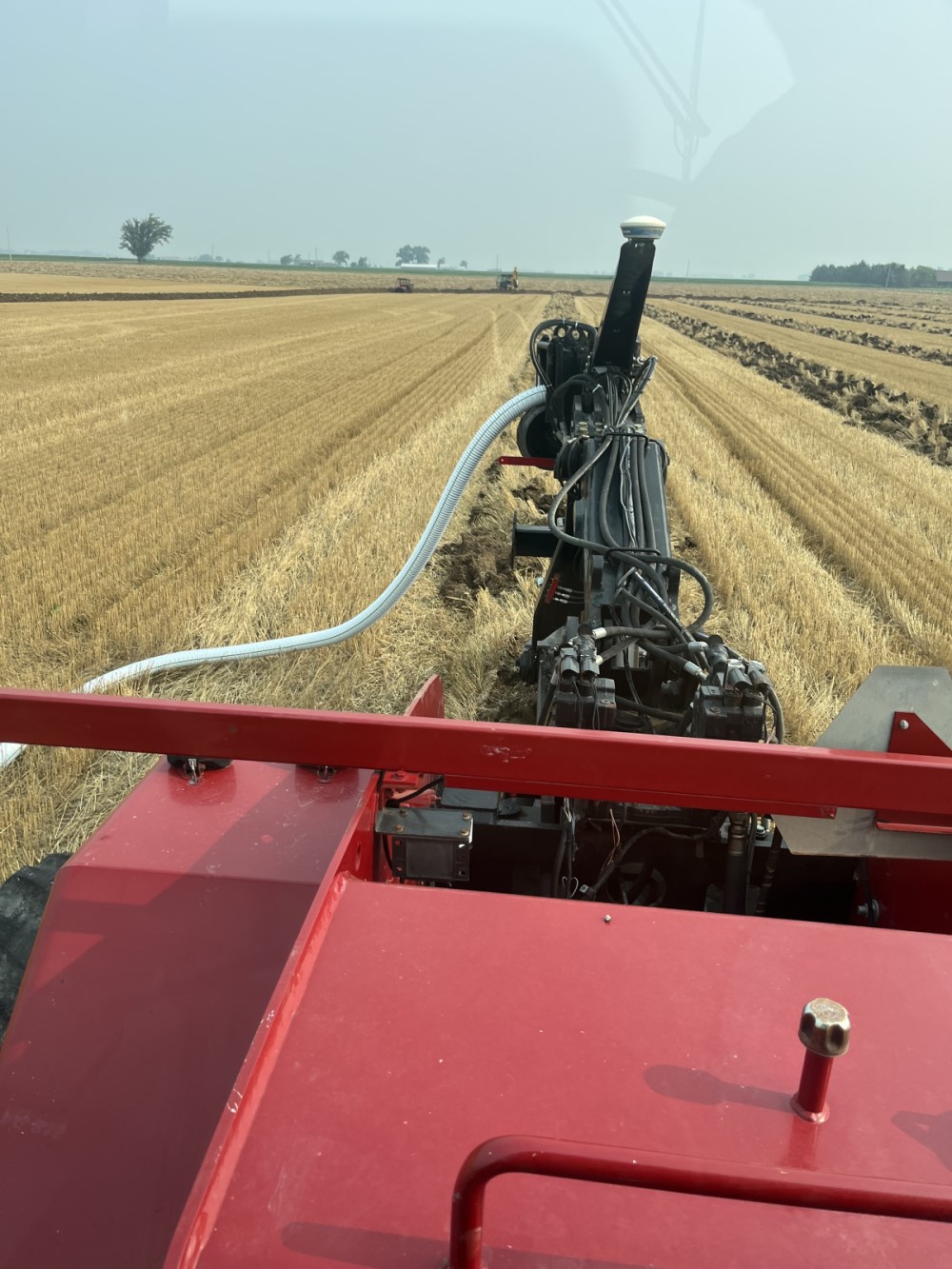Growth and Innovation
July 27, 2023 / 3 minute read
Wheat presents the perfect tiling opportunity

Summer offers a strategic opportunity for farmers. With the right planning, they can harvest one crop, install tile in preferred weather conditions and have the field ready well in advance of the next season’s planting.
In a wide section of the U.S., winter wheat is harvested in July. That enables farmers to take advantage of the fallow fields during the rest of the summer months.
“We are purposely planting wheat just to have it there to put the drainage tile in over the summer, and probably the biggest reason is the weather,” said Cole Behrman, a farmer in northwest Ohio and owner of Black Swamp Drainage.
“If we can install it in drier conditions, we’re doing a better job for the ground and for the tile that’s going in the ground.”
Benefits of tile
Landowners see many benefits from investing in tile drainage, and they lead to higher yields and more valuable farmland. Subsurface drainage removes excess water, which reduces runoff and soil erosion and enables plants to have deeper roots. By lowering the water table, root systems are stronger and better equipped for dry years as well. The one-time installation lasts for decades with minimal maintenance.
Tile drainage also gives farmers a longer growing season by letting them get in the fields earlier in the spring. They can plant with a consistent level of soil moisture and know the risk of needing to replant after heavy rains is greatly reduced. Landowners often start with the field that would see the greatest benefit from tile drainage and add more acres as they are able.
Summer conditions are ideal
In most agricultural areas in the U.S., spring and fall are generally the wettest times of the year, and trying to install tile drainage in a narrow window of time can be unpredictable. But the drainage timing “hack” is getting out.
“There seems to be a lot more people accepting the fact that they can give up a little on the crop end by planting wheat because we know we’ll benefit from the tile being installed in better conditions,” Behrman said.
While current wheat prices add to the incentive to tile during the summer months, installation of drainage water management systems can improve subsequent corn and soybean yields by 30%, which more than makes up for the difference in wheat prices.
Worth the investment
One of the advantages to putting in tile in the summer months is optimizing the drier conditions for installation.
Steve Gerten has owned Inbody Drainage Company in northwest Ohio since 1981. His business is booked out for a year and a half, which enables farmers to set up their crop rotations before tiling.
“I’ve been a longtime advocate of getting my customers to grow and plant wheat for tiling,” he said. “My message is that not only does it give us the opportunity to have a more open window to get this work done, but they can reap the benefits moving forward on row crops by putting in the tile when the conditions are favorable. They’re going to end up with a better job.”
Gerten has found farmers to be much happier with the work done in drier summer conditions, and it all begins with planting wheat in preparation.
“If farmers think we can do all this after harvest in the fall, the window of opportunity does not cooperate sometimes,” he said. “So, we’ve been very successful in getting people to plant wheat to have the window of opportunity to install tile on the farms.”
To find additional information on field drainage, contact a representative or visit adspipe.com/agriculture.
